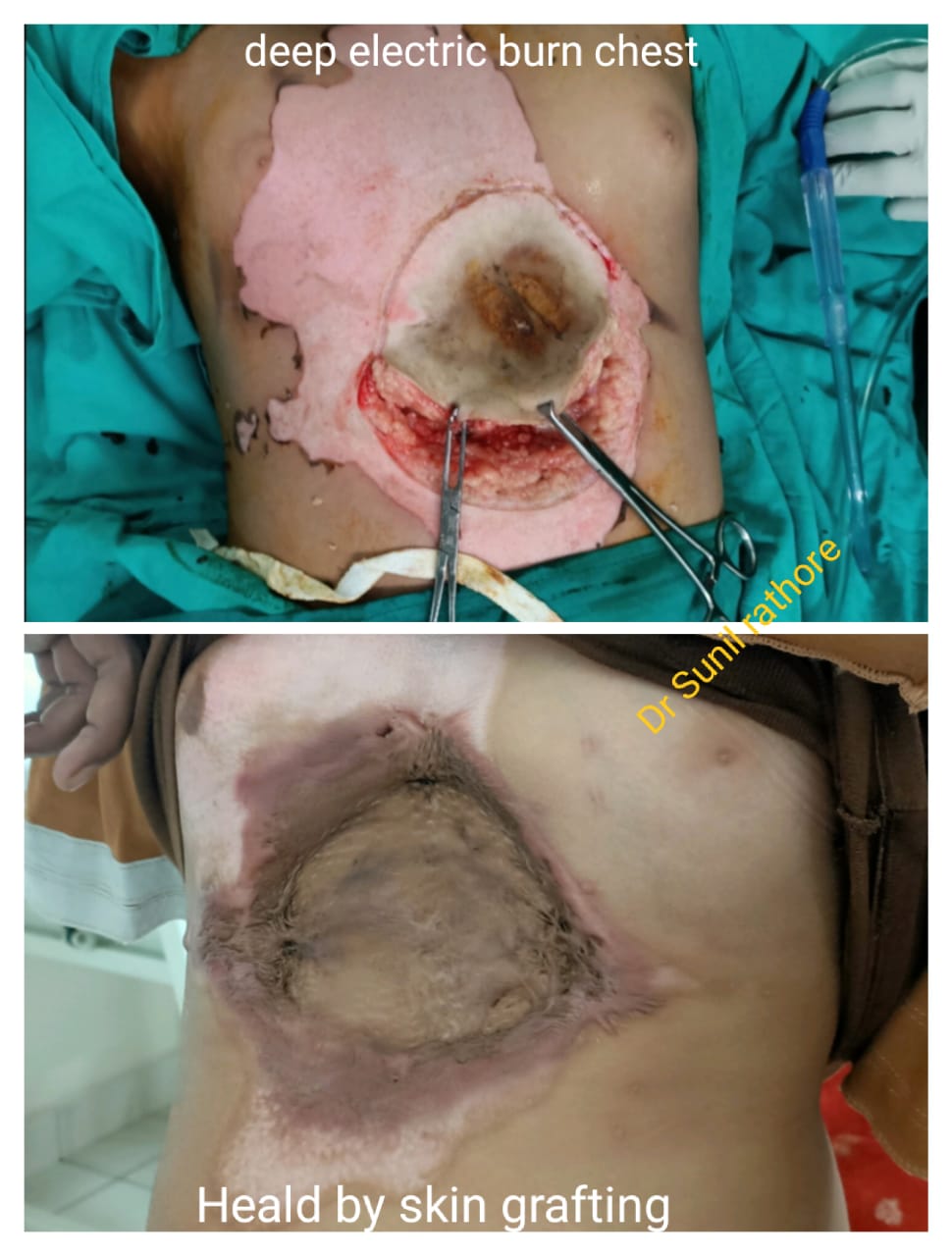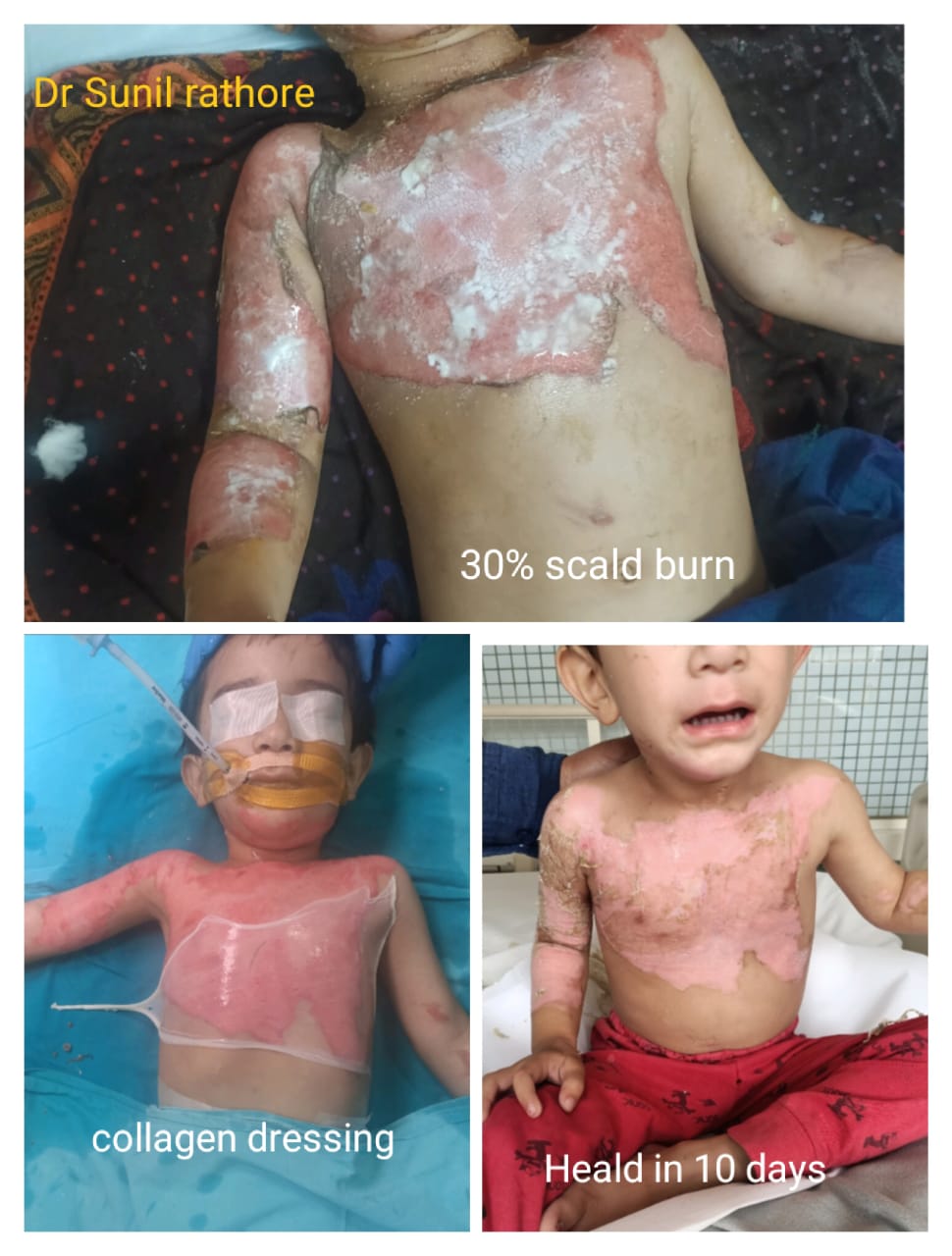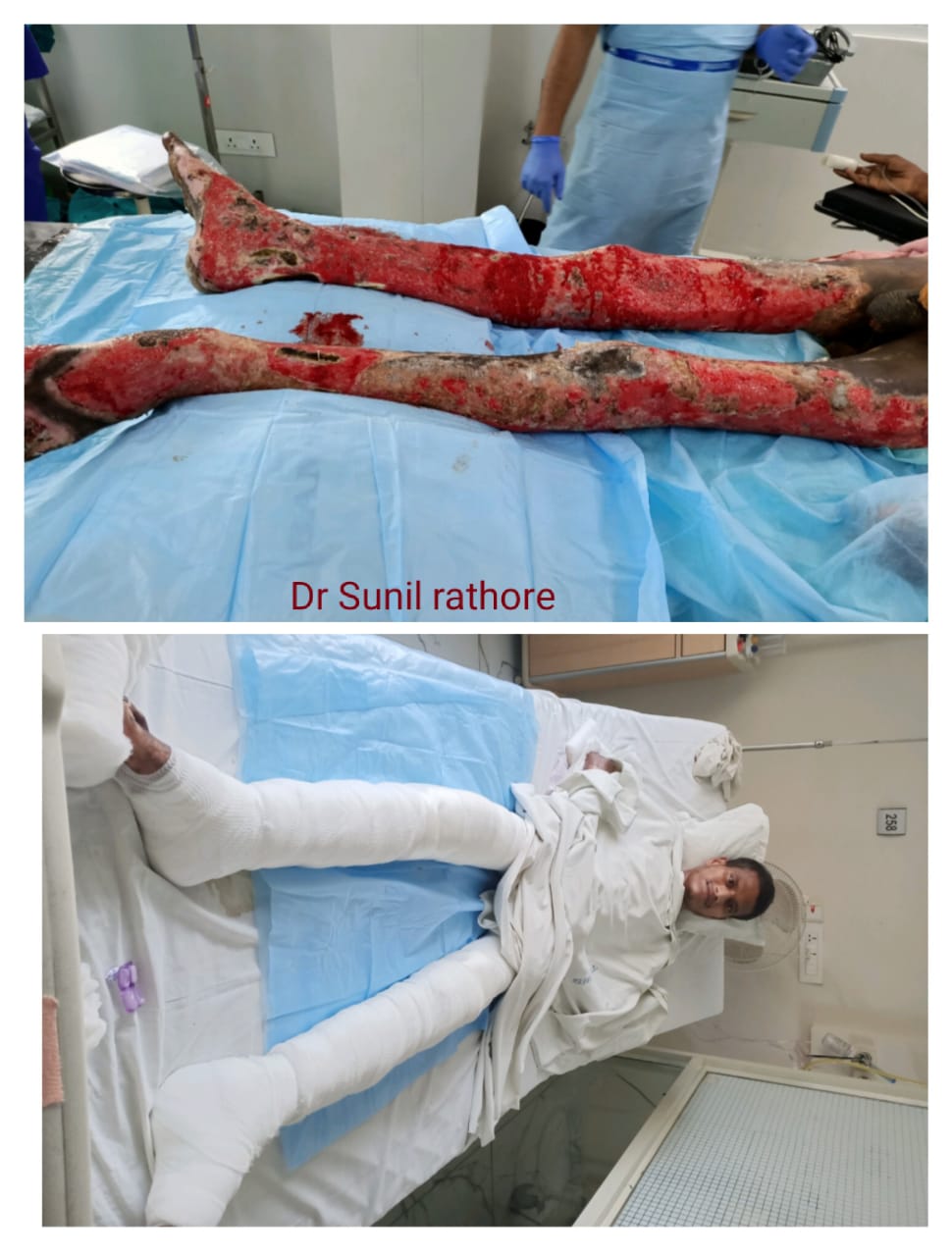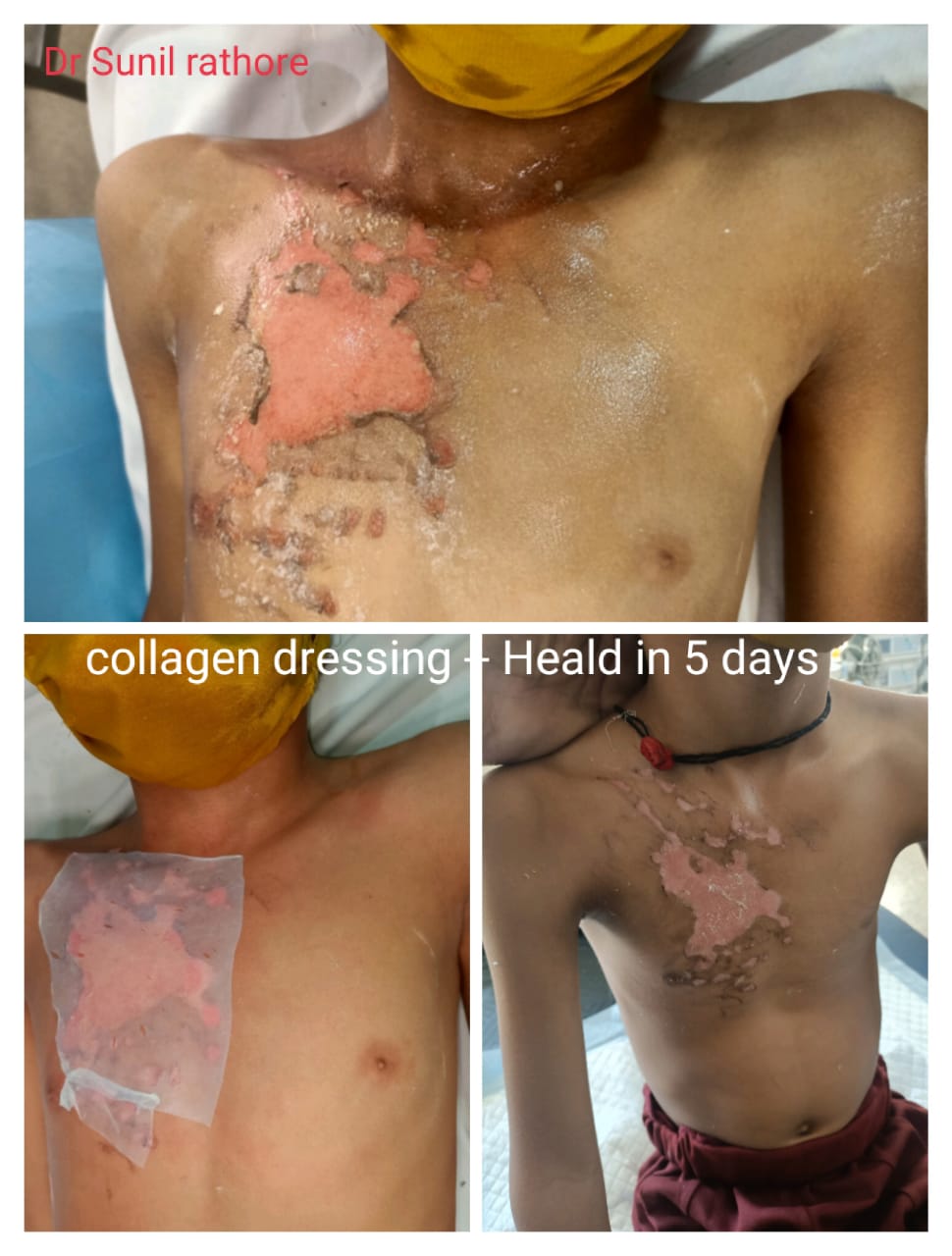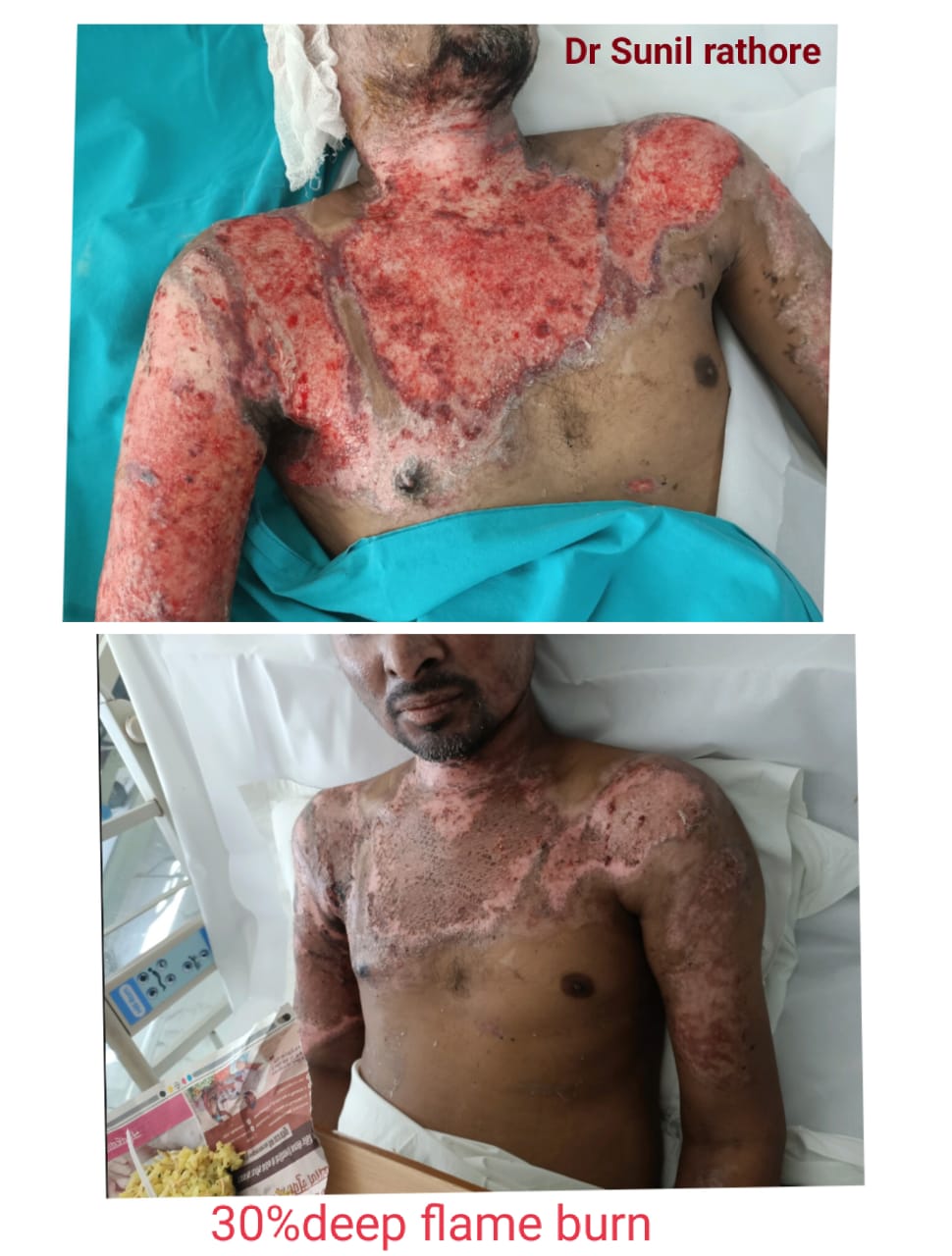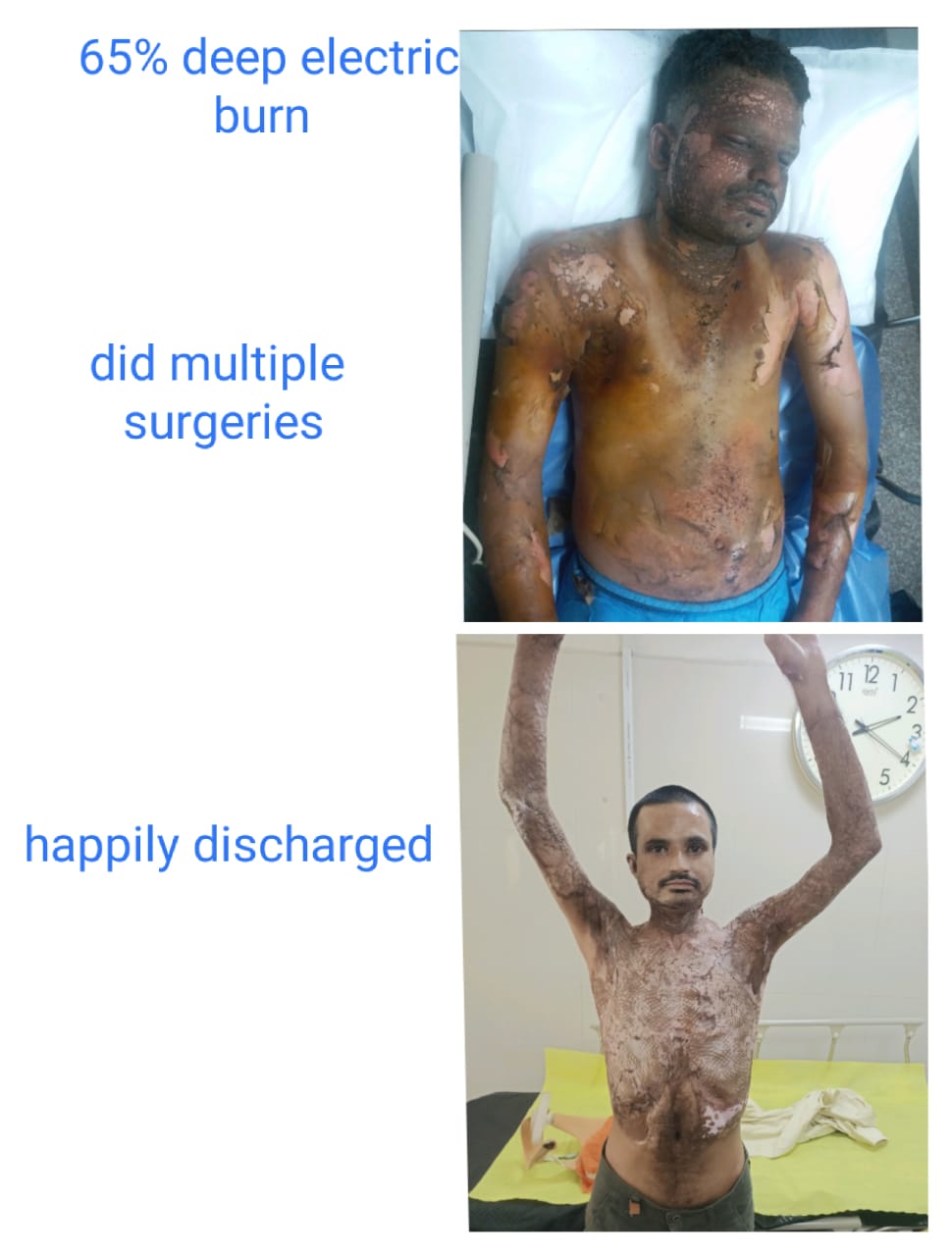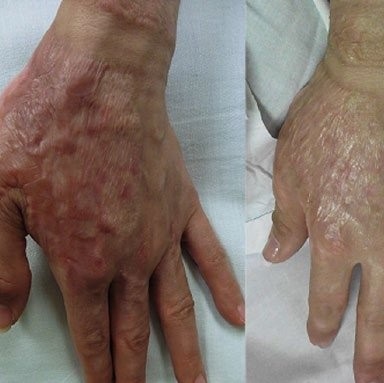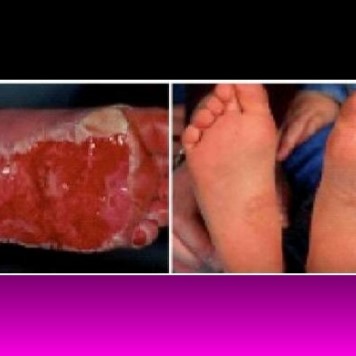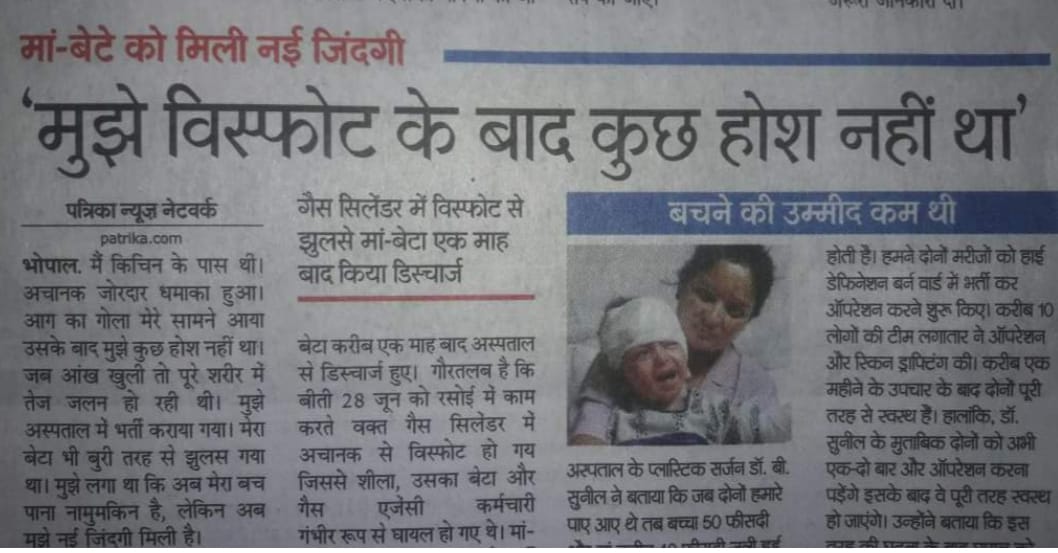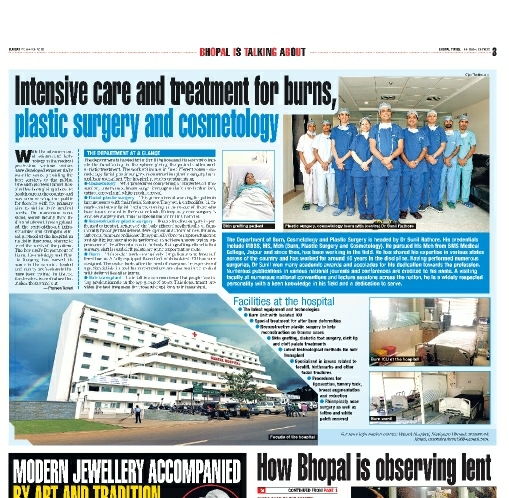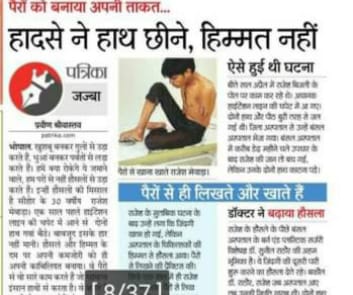About
Dr. Sunil Rathore
Dr. Sunil rathore is a renowned burn and plastic surgeon of central India . He has done Mch in burns and plastic surgery from one of the top most goverment medical institute of India( SMS medical college and hospital Jaipur) and is registered in medical council of India. He is running a fully dedicated, highly euipped state of art burn unit in Bhopal . He has treated thousands of burn victims till date and salvaged many lives. he is offering all types of reconstructive surgeries for post burn deformity like skin grafting , flap surgery, tissue expansion surgery , integra dermal graft , skin transplant , homograft , collagen dressing , paediatric burn. isolated unit , trained burn staff, hydrotherapy room ,intensive care facility, all possible advanced surgical reconstruction facilities make them unique and complete. His Moto is to provide best affordable services to burn patients .
BURN TREATMENT
BURN
Burns are tissue damage lead by heat, chemicals, electricity, radiation or the sun. Burns are one of the most common household injuries, especially among children.
The term “burn” means more than the burning sensation linked with this injury. Burns are specified by severe skin damage that causes the affected skin cells to die.
Burn Levels
There are three primary types of burns: first-, second, and third-degree. Each and every degree is based on the severity of damage to the skin, with first-degree being the most minor and third-degree being the most severe Damage includes:Treatment
Most minor burns can be treated at home. They usually heal within a couple of weeks. For serious burns, after appropriate first aid and wound assessment.
- Your treatment may involve medications, wound dressings, therapy and surgery.
- The goals of treatment is to control pain, eliminate dead tissue, prevent infection, reduce scarring risk and regain function.
- People with dreadful burns may require treatment at particularly specialized burn centres.
- They may need skin grafts to cover large wounds.
Complications
- Compared with first- and second-degree burns, third-degree burns carry the most risk for complications, such as inflammation, blood loss, and shock, which is often what could escort to death.
- At the same time, all burns carry the risk of infections because germs can enter into broken skin.
- There are many more complication possible with burns of all levels.
- Like sepsis, tetanus is a bacterial infection. It affects the nervous system, eventually it leads to problems with muscle shrinkage.
Preventions
Burns have many accidental causes.You can take these steps to reduce the risk of burns:
- Wear sunscreen,Lock up chemicals, lighters and matches.
- Use the stove’s back burners as much as possible when cooking.
- Turn handles of pots and pans where they won’t be bumped and don’t leave the stove unattended.
- Set safeguards around a fireplace and never leave a child unattended
- Cover electrical outlets.

Mansee
Satisfied with a treatment He is the best plastic surgeon I have come across till now.

Shivangi
Dr Sunil rathore is a very reputed burn surgeon of the town. His command on the subject and his meticulous surgical skill makes him par excellence among the contemporaries. His soft-spoken nature and patient care take him to league of great surgeon. A gentle person and a wonderful clinician

Vandana
Best burn surgeon I came across. He has to much clarity in his hands he made me look like myself as I was before the burn.
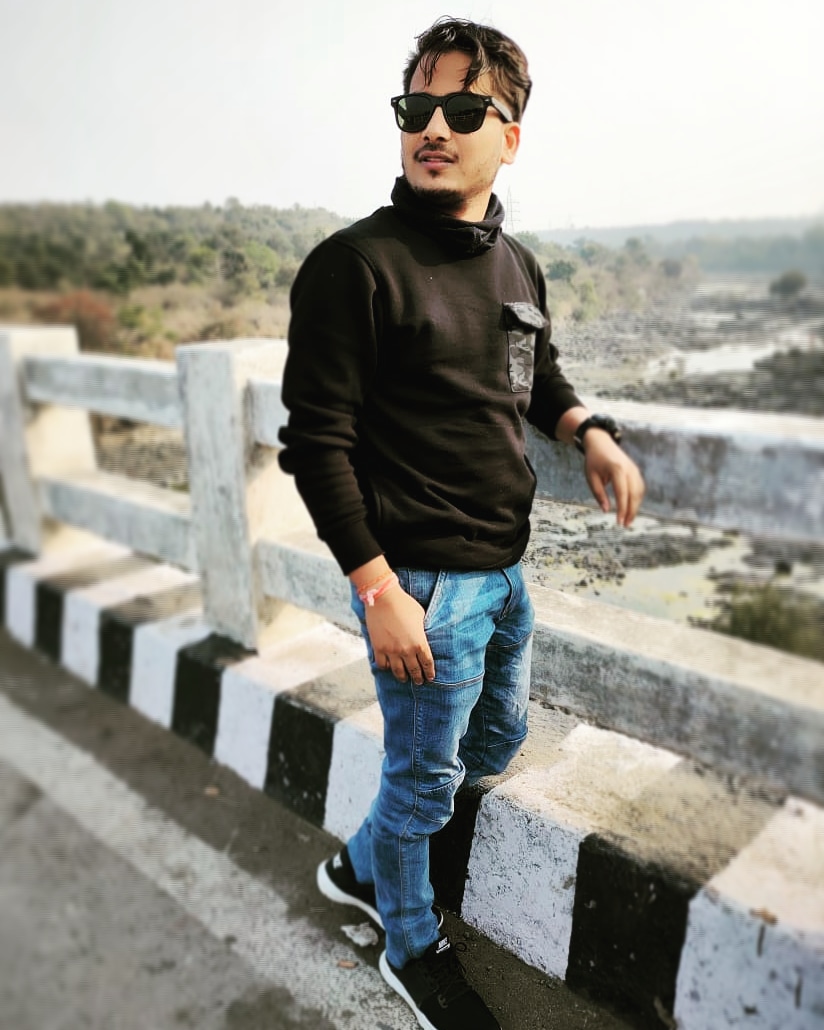
RC
Dr Sunil rathore is renowned surgeon at Bhopal (MP), in the field of burn surgery. He is very humble and dedicated towards patients.
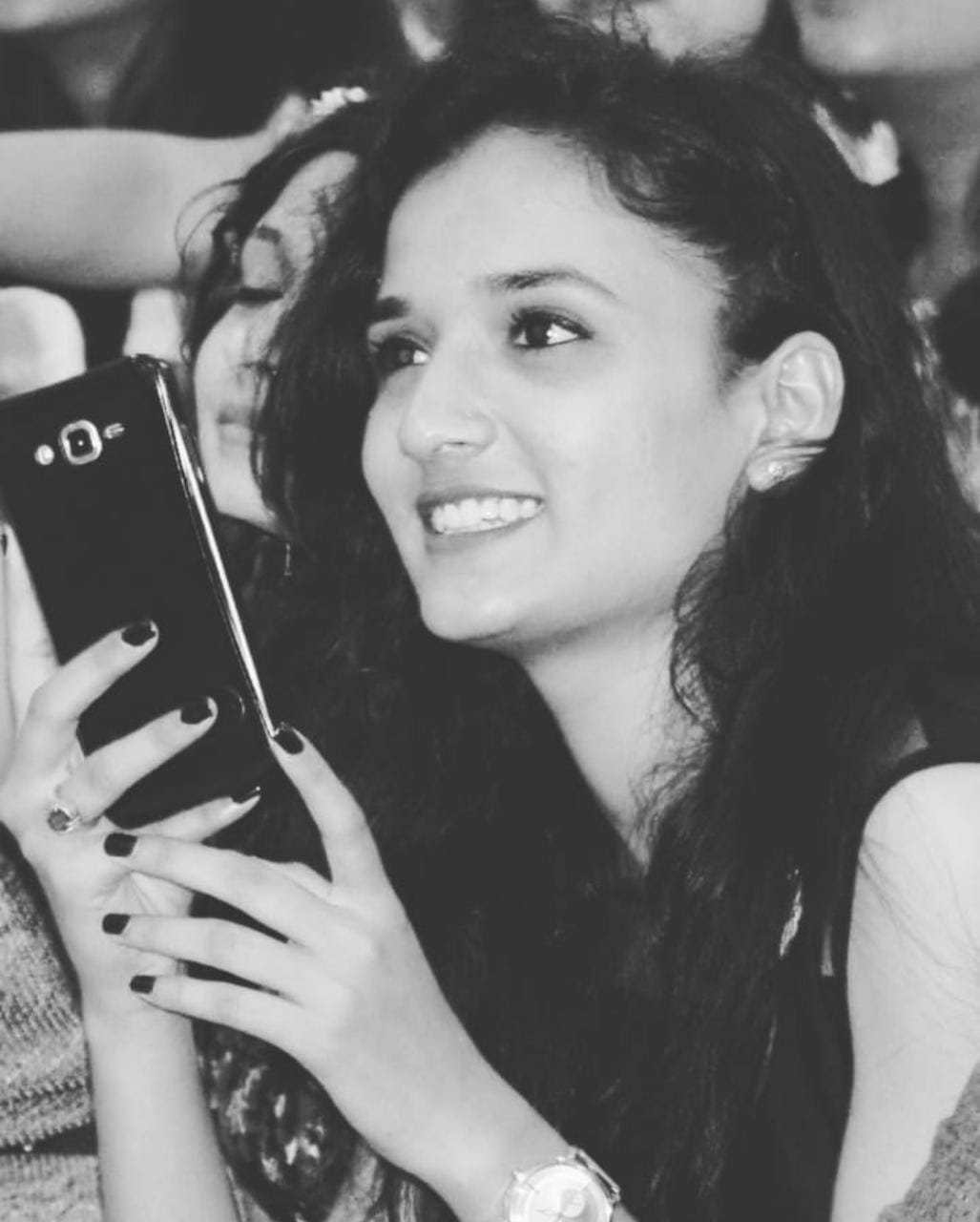
Radhika Chouhan
i have been in very bad condition he came as an angel from this incident i came to know that there is presence of god in human as DOCTORS he helped me alot to overcome my situation.
Gallery
Check our Gallery
Your skin dosen't define you!
- All
- Photos
- Videos
Burn Treatment in Bhopal
Burn Treatment in Bhopal
Burn Treatment in Bhopal
F.A.Q
Frequently Asked Questions
Genrally Aksed Questions
-
What is the difference between first-, second- and third-degree burns?
1st degree burn : red , painful without blisters. 2nd degree burn : red or reddish white painful blisters , blisters or skin peeling. 3rd degree burn : whitish or leathery apperance thickened skin , no pain.
-
What should I do if I get burned?
It depends on the level of burn. Most first-degree burns can be treated at home. It's advised to immerse the burn in cool tap water or apply a cold, wet compress. Do not apply ice, butter or ointments to the burn. Cover the burn with a sterile bandage. If blisters form, do not pop them; let them heal on their own. Take over-the-counter pain medication to relieve pain and reduce inflammation. Second- or third-degree burns require immediate medical attention and should be treated at a hospital or at a burn center..
-
What do I need to know about electrical or chemical burns?
Any burns caused by electricity or chemicals should be seen by a specialist at a burn center.
-
How long do burns take to heal?
First degree burn : 1week . 2 nd degree burn : 2 to 3 weeks . 3rd degree burns : more than 1 month and may require skin grafting or other reconstructive surger . It's always better to heal 3rd degree burn by skin grafting to avoid future problems.
-
When should I see a burn specialist?
In children any burn more then 10 percent of body surface area, in adults any burn more then 20 percent body surface area should be seen by burn specialist . And any chemical and electrical burn should be reffered to burn specialist .
Contact
Contact Us
Want to get in touch? We'd love to hear from you. Here's how you can reach us...
Our Address
Bansal Hospital, Sahapura Lake,
Near Manisha Market,
Bhopal-462016, Madhya Pradesh
Email Us
plasticsurgeon250414@gmail.com
Call Us
8817859968,9893688724








